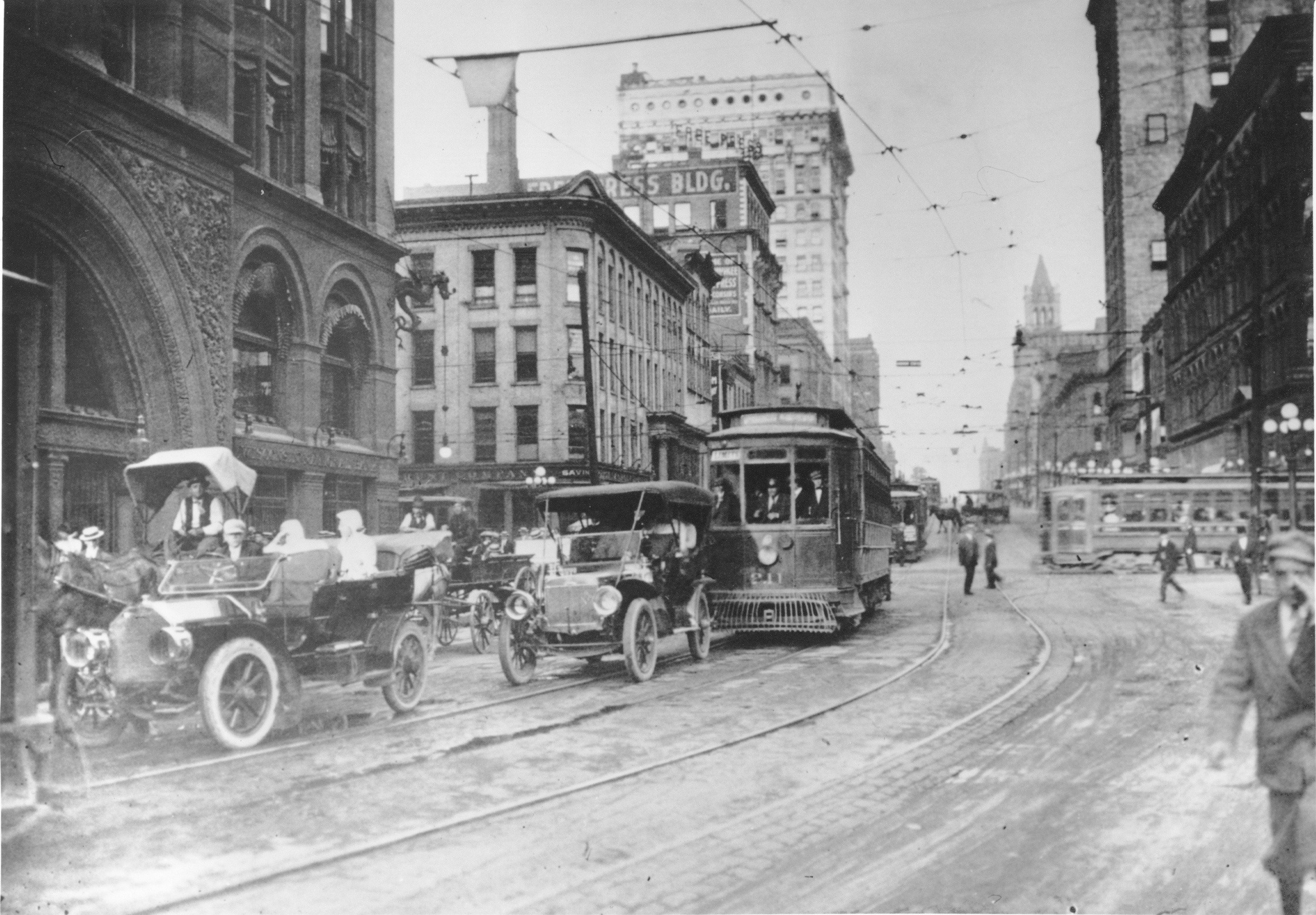Grade Levels
3-5Duration
One or two class periodsAssociated Entries
Mass TransitMaterials
Getting-Around-WorksheetAuthor
Joseph Walzer
Standards
| SS.Hist2.a.i | Describe patterns of continuity over time in the community, state, and the United States. |
| SS.Hist2.b.i | Describe patterns of change over time in the community, state, and the United States. |
Introductory Activities
Use the “Getting Around Entry” to display the image of the children on the bicycle for the class. Click on the image to get the source information. Ask the following questions (5 minutes):
- Who is in the picture? (two boys)
- What are they doing? (riding a bicycle)
- Where are they doing it? (on a sidewalk in Milwaukee)
- When are they doing it? (1943)
- How are the boys performing this activity in a way that is similar to how you might perform it today? (Answers will vary.)
- How is this activity different than how you might perform it today? (Answers will vary, but students might bring up the safety issue, style of clothing, and or differences between the bicycle in the photograph and a modern bicycle.)
Follow up questions: Ask students how they get from place to place in Milwaukee today. Answers may include walking, riding a bicycle, riding in a car, or taking a bus. Then ask students how they would get from Milwaukee to another city in southeastern Wisconsin. (3 minutes)
Finally, ask students how people may have gotten from place to place in the 1940s. They probably used many of the same forms of transportation we use today. However, instead of buses, they probably used street cars to get from place to place in the city and interurban trains to get from city to city. Display the other images in the “Getting Around” entry, which includes a train and the “Mass Transit” entry, which includes a TMER&L streetcar image. (2 minutes)
Developmental Exercises
Ask students to complete the worksheet and share answers. Discuss similarities and differences with the past. (10 minutes)
Closure
For average and below average readers: Have the students draw one of their modern forms of transportation from the worksheet and label two similarities and two differences between their drawing and its corresponding historical mode of transportation. (25 minutes)
For advanced readers: Pass out the “Getting Around Entry.” Have students underline the following key dates. Then, have them construct a timeline. Note: Depending on ability levels, teachers could choose to postpone the timelines by a day and complete a more-involved assignment on timelines. (25 minutes)
- Construction of the Milwaukee-Watertown road (1837)
- Four daily stagecoach runs (1845)
- Milwaukee-Watertown road covered in wooden planks (1853)
- Horse-drawn street cars (1860)
- First trollies in Milwaukee (1890)
- First interurban train (1900)
- First bicycle riders in Milwaukee (1869)
- First automobile produced in Racine (1903)
- Harley and Davidson build their first motorcycle (1901)
- Wisconsin’s highway system begins (1918)
- First airport opens in Milwaukee (1919)
- General Mitchell Field opens (1941)
Possible timeline questions:
- What segment on the timeline is shortest?
- What segment on the timeline is longest?
- Which of these developments do you use most often?
- Which of these developments do you use least often?
- Which of these developments do you think it most important? Why?